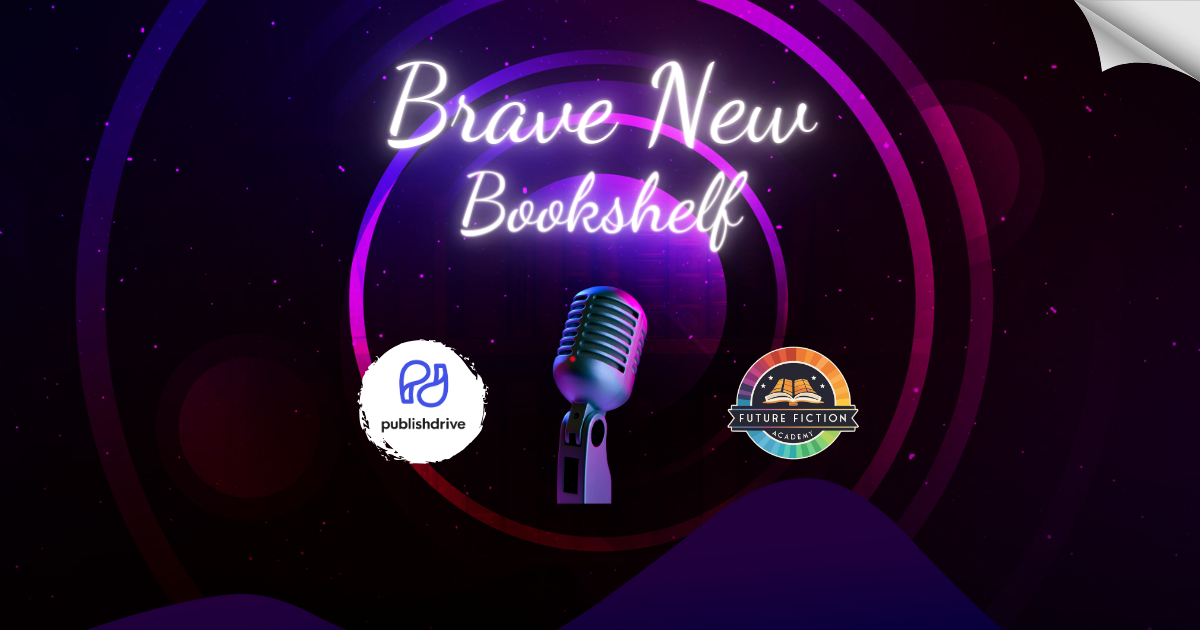Brave New Bookshelf Episode 36: Story Bibles From Story Snap With Cameron Sutter From Plottr

In this episode of Brave New Bookshelf, hosts Steph Pajonas and Danica Favorite welcomed back Cameron Sutter, the visionary creator of Plottr. Known for developing tools that help writers organize and visualize their stories, Cameron returned to share something groundbreaking: Story Snap, a powerful new AI tool designed to build comprehensive book bibles in minutes.
Apple Podcasts | Spotify | Amazon Music | YouTube | iHeartRadio | RSS Feed
Meet Cameron Sutter: Plottr Creator and AI Innovator
Cameron Sutter has long been a champion of tools that make writing more efficient. His first major contribution, Plottr, quickly became a favorite among authors for its visual plotting interface and series management capabilities. But until now, AI hadn’t been part of Plottr’s toolkit.
That’s where Story Snap comes in. This new app uses AI to eliminate the most time-consuming parts of the publishing process, like creating book bibles. “We’re building things with AI and looking to see where it’s helpful for writers — making sure it’s a tool, not just something fun to play with,” Cameron shared on the show.
What Is Story Snap?
At its core, Story Snap is an AI-powered tool that analyzes your manuscript and outputs a richly detailed book bible, complete with character profiles, timelines, setting descriptions, worldbuilding elements, and more.
Here’s how it works:
- Upload Your Manuscript: Drop in your book file (Word or similar).
- AI Goes to Work: Story Snap processes the manuscript using advanced AI models in under five minutes.
- Get Organized: You receive a Word document and a Plottr file, filled with structured, easy-to-navigate story elements.
Unlike other tools like Sudowrite or Realm Chef, Story Snap dives deep — processing up to 10 million tokens and hundreds of prompts per project. It doesn't just capture the basics — it unearths subtle emotional tones in settings, minor character arcs, and complex worldbuilding elements.
Who Is It For?
Writers, editors, and even pantsers (those who write without outlines) will all find something to love. For developmental editors in particular, Story Snap is a game-changer. What used to take hours of reading and note-taking can now be done in minutes.
“We’ve calculated metrics on this,” Cameron explained. “For the average book, we’re saving people at least 10 hours of work — even when they’re already using AI-assisted workflows.” One user even reported saving 82 hours on a single project.
And for writers who don’t outline ahead of time, Story Snap provides a clear view of their draft’s structure after the fact, helping them bring coherence to their story.
Standout Features of Story Snap
The highlights to know about this tool:
- Incredible Detail: Goes far beyond characters and plot to include emotional resonance of locations, side character significance, and worldbuilding intricacies.
- Add-On Marketplace: Choose optional extras like marketing metadata, book club discussion questions, and more.
- Flexible Format Options: Whether you prefer Word documents or visual planning in Plottr, Story Snap integrates seamlessly into your workflow.
Real-World Use Cases
Perhaps one of the most exciting uses is series continuity. Writers working on multi-book sagas can generate individual bibles for each installment, then use tools like Google Notebook LM to cross-reference and maintain consistency across the series.
Cameron even shared a personal story: his 14-year-old daughter is publishing her first novel, using AI for everything from cover design to marketing. Tools like Story Snap are democratizing writing, empowering authors at every stage of their journey.
The Tech Behind the Tool
Story Snap uses OpenAI’s language models (like ChatGPT) under the hood, with carefully tailored prompts and chunking strategies that minimize errors and boost accuracy. The team has fine-tuned the backend to avoid common AI pitfalls — like hallucinations or overly verbose outputs — ensuring that results are clear, relevant, and useful.
While the tool currently relies on OpenAI’s models, future updates may bring in even more flexibility with different AI engines.
What’s Next for Story Snap?
Though it’s already proving invaluable for editors and high-output authors, Story Snap isn’t just for professionals. After months of private beta testing in late 2024, public access is expected in March 2025. Interested writers can head to StorySnap.ai to learn more or join the waitlist.
Key Takeaways from This Episode
In closing:
- Automate the Tedious: Story Snap slashes hours of manual work, letting writers and editors focus on what matters.
- AI as a Tool, Not a Crutch: Story Snap is designed to enhance human creativity, not replace it.
- Seamless Workflow Integration: Word doc or Plottr file? You choose.
- Stronger Series Management: Build book-by-book bibles and combine them into powerful continuity guides.
- Customization Is Everything: Tailor your outputs with optional add-ons for marketing, metadata, and more.
With AI thoughtfully integrated into the creative process, authors can reclaim time, stay organized, and confidently write using Story Snap.
Be sure to visit StorySnap.ai and Plottr. For more insights from this episode, visit the podcast website.
AI-Powered Publishing Assistant
Check out PublishDrive’s Publishing Assistant, an AI-powered tool designed to support you at every stage of your self-publishing journey, from manuscript to marketplace.